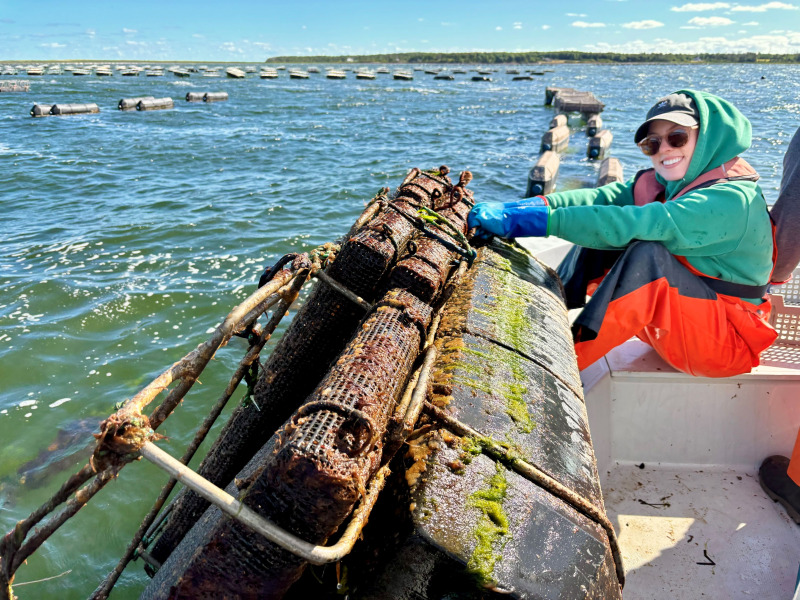UPEI researchers receive funding to study impact of environmental change on PEI Eastern oysters

A UPEI project titled “Exploring change in PEI Eastern oysters to understand resilience and inform restoration” has received $25,000 from the Ocean Frontier Institute’s (OFI) new community climate adaptation fund.
The project is led by Dr. Emma Ladouceur, assistant professor of biology and climate change and adaptation (Conservation Ecology Lab). Also involved are Madeleine Lafrenière, biology honours student, and Dr. Pedro Quijón, professor of biology (Coastal Ecology Lab) at UPEI. The team is working closely with a community partner, Jesse Kerr, an aquaculture biologist in the Aquaculture Division, PEI Department of Fisheries, Tourism, Sport and Culture.
“Populations of Eastern oysters (Crassostrea virginica) build shellfish reefs that support biodiversity in fisheries, filter water, and stabilize coastlines,” said Ladouceur. “Many areas, such as New York City, once famous for traditional wild fisheries, have lost these ecosystems, and are now adopting ecological restoration approaches to initiate recovery. On PEI, the Eastern oyster supports both a traditional wild fishery and an aquaculture industry, despite past devastating effects of disease and overharvesting. Environmental change can cause unpredictable trajectories in species, and growing evidence suggests oysters are at risk due to global and local pressures.”
The PEI government has been monitoring oyster growth rates throughout the province for more than 12 years, she said. But while the monitoring data are rich in information, they have not been fully analyzed. The threat of Multinucleate sphere unknown (MSX), first detected in oysters on PEI in 2024, makes the examination of the data all the more important.
The data will be examined to identify natural and human-caused factors that explain changes observed in these populations leading up to the arrival of MSX, examine how the discovery of the disease changes these long-term dynamics, and investigate restoration approaches used elsewhere that may lead to favourable results on PEI.
The findings will be used to understand the long-term dynamics and growth of wild and farmed oyster populations and how they correspond with environmental changes and MSX. Ladouceur said that in future research, they hope to learn how oyster populations might be strengthened and supported after major disturbances, possibly through techniques used in restoration ecology.
Lafrenière has been working with the provincial aquaculture team this summer and autumn, helping them in the field and in the lab, collecting and processing samples, and getting hands-on experience with the approaches used to gather monitoring data every year. The data analysis will begin this fall and will be the basis of her honours research project.
Research funding was provided by the Ocean Frontier Institute, led by Dalhousie University.
UPEI acknowledges the assistance of Canada’s tri-council of federal granting agencies—Natural Sciences and Engineering Research Council of Canada (NSERC), the Social Sciences and Humanities Research Council (SSHRC), and the Canadian Institutes of Health Research (CIHR)—through its Research Support Fund, which helps fund services and infrastructure that support research activities at the University. In 2025–2026, UPEI’s RSF allocation is $1,168,176.